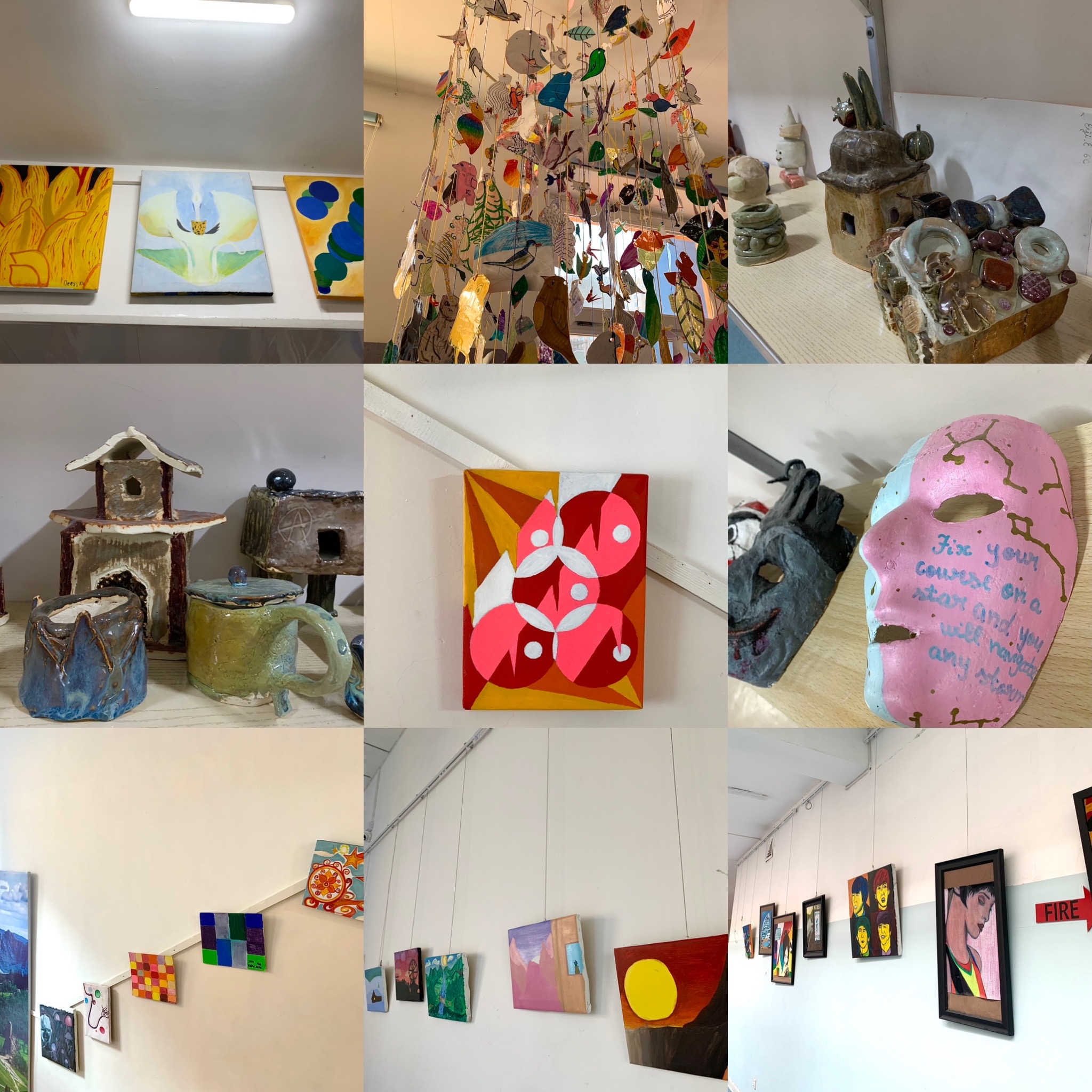Visual Arts at the American School of Ulaanbaatar
Visual Arts at the American School of Ulaanbaatar
Visual Arts is an essential part of ASU’s education. ASU’s artists work in a wide variety of media; painting, making, drawing, and sculpture. Aside from practicing these media, students engage with the history of art, art in various cultural contexts, form and develop techniques and skills such as landscape and still-life.
The Art Program at ASU
Visual Arts are taught from PreKindergarten to Grade 8l with optional elective classes from grade 9. In high school, there are four levels of art classes that students may take:
Art 1 classes focus on 2D media such as painting, drawing, and printmaking. Students develop compositional skills as well as projects based on real-world design challenges.
Art 2 classes are also foundation-level but focus on 3D media and skills, including ceramics, carving, and sewing. These students continue to build their knowledge of art while focusing on sculptors.
Art 3 is a higher-level course in which students focus on their understanding of the themes of art. These students direct their studies by drawing on historical and contemporary artists for inspiration, developing a body of work using a range of media. This course also serves to prepare students for taking AP Studio Art.
At Level 4, students have two options. Artists interested in pursuing a degree in an art-related field are encouraged to challenge themselves by taking AP Studio Art, a rigorous course in which students create a portfolio of 15 works based on a sustained investigation. Students who enjoy art but don’t want the pressure of AP can take Art 4, which is similar to AP, in that they will create a portfolio based on their artistic interests but will create eight works.
Students are eligible to take AP Studio Art in their second art course, as long as they have the required grades and community service hours.
Why is art important for ASU students?
- Working in the arts aids the development of creative problem-solving abilities.
- Teaching through the arts may help students grasp complex subjects by visualizing them.
- Children's motor skills, linguistic skills, social skills, decision-making, risk-taking, and originality of inventiveness are all aided by art.
- Learners in the visual arts are taught about color, layout, perspective, and balance, which are all skills that are required in academic work presentations (visual and digital).
- Students who would not usually be engaged in class are reached by combining art and other content to promote participation.
- Art activities help children develop critical thinking skills by allowing them to be more deliberate and comprehensive in their observations of the world
- The arts present challenges to students of all ages
- Students benefit from art education because it ties them to other cultures worldwide; thus, the combination of art and culture allows students to expand their learning.
- The visual literacy skills used by students when analyzing and interpreting art can help them look and think critically at the visual culture they interact with every day on social media.
National Art Honor Society (NAHS)
ASU is home to Mongolia’s only chapter of the National Art Honor Society, an organization sponsored by America’s national art educator’s association. NAHS encourages students to excel as artists and leaders while using their skills to make the world better.


